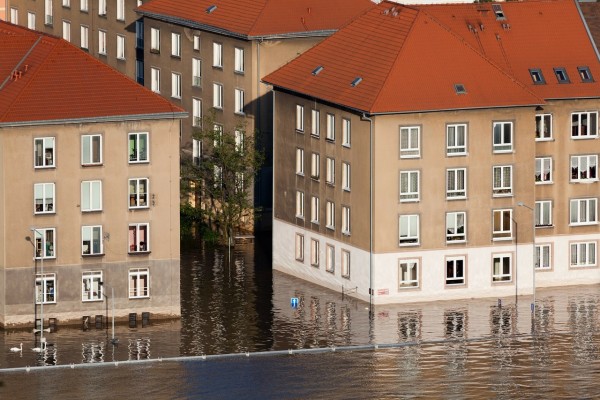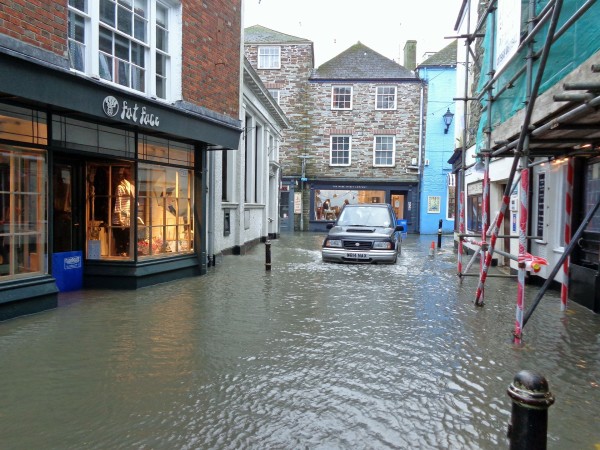
Thousands of homeowners have been displaced in recent years, as large areas of the UK succumb to severe flooding. The worst affected areas remain the far South, Cumbria and parts of Scotland, but when the winter storms hit homeowners along every coastline are understandably worried. In fact, as many as one in six of all British homes could be at a major risk of flooding.
If you and your family get caught in a flood warning, it can be a very distressing time. Knowing how to prepare and respond to a natural disaster can help you regain some control of the situation and, more importantly, keep yourselves safe.
Stage 1: Preparation
Maybe you know that your home is on a floodplain, or have even had to deal with water damage in the past. If you’re at all worried about your property flooding this winter, take steps as soon as possible to limit its effect.
During dry months, you should consider installing “cell insulation” measures in your home. These include defensive precautions like water-resistant doors and windows, raised thresholds and re-positioning electrical sockets so they are further from the ground. Your insurance company may cover the cost of these if you are renovating after previous flood damage, or you can apply for a flood resilience grant (up to £5,000 from your local council). Other home improvements, such as replacing carpets with tiles, can limit the severity of damage should flooding occur.
Otherwise, make sure you keep an emergency kit easily accessible. This should include a torch (preferably wind-up), a radio, non-perishable food, waterproofs and bottled water. You should know how to turn off the gas, electricity and water supply in your home – and ideally be prepared to do this in the dark.
Formulate a plan for what will happen if your home begins to flood. Where will your family go? What about pets? Will you want to move any furniture off the floor or even upstairs? Depending on the level of threat, you may want to invest in flood-protection measures for your property, like sandbags, and flood bags (large plastic covers that protect bulky furnishings).
Finally, take lots of pictures of your décor and possessions – this will make it easier to make an insurance claim should any of it become damaged.
Stage 2: When flooding is imminent
Once your area has been issued with a severe flood warning, it’s time to spring into action. Put all of your valuable items, documents, and photographs into plastic boxes or wallets, and move them onto high shelves. You might want to back digital files up onto external hard drives and store these, rather than trying to protect entire computers. Turn off your water, gas and electricity, and start moving furniture off the floor (upstairs, if you can) or wrapping it in flood bags.
Block any areas that are likely to allow water ingresses, like airbricks, gaps around doors, and holes where cables lead outside. Toilets and sinks can sometimes be a source of flood water, so plug these as best you can, too.
If you have time, put something heavy on top of manhole covers outside, and check to see if your neighbours need any assistance with their homes. As soon as the emergency services advise you to leave your home, follow their instruction.

Stage 3: Returning home after a flood
The most important thing is to stay safe. Flood water can be contaminated with chemicals and sewage, so make sure you protect yourself by wearing waterproof clothing, rubber gloves, wellies and a face mask. Move through your property carefully, as murky water can hide trip hazards, sharp objects and uneven surfaces. Remember that structural damage may have been caused and cracks in walls and ceilings may no longer be safe. Avoid touching anything electrical.
Before moving anything or draining the water, capture evidence of the damage. Mark the walls to track how high the water level reached in each room, and make an inventory of affected furniture and appliances. Take digital photos of everything to send to your insurance provider, and contact them as quickly as possible for the next steps you should take. They may want to take their own records of the damage before arranging repairs, so it’s important not to act too soon.
Stage 4: Clean up
Once you have the green light from your insurance provider, start getting the water out as soon as possible. You may be comfortable renting a submersible pump to drain the water, but if the damage is extensive, you may be better contacting a professional flooding response team. They will be able to appropriately handle any contamination, and clear both the indoors and outdoors of your home.
Meanwhile, you should remove any possessions damaged by the flood and begin drying/airing anything that is salvageable. Continue to take photographs as you go, and try and remember an approximate purchase price (and when you bought it) if you can. Don’t throw anything away before confirming it’s ok to do so by your insurer – or you could end up without a replacement.
Keep hold of any receipts related to your displacement and return to home, as your insurance should cover these costs as well as repairs.




 POSTED BY
POSTED BY 

